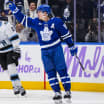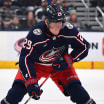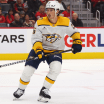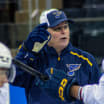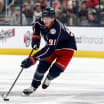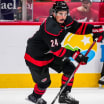Hayley Wickenheiser always wanted to be like Wayne Gretzky or Mark Messier. Growing up in the 1980s in Shaunavon, Saskatchewan, she would sit on the arm of an easy chair next to her father to study the Edmonton Oilers on "Hockey Night in Canada."
Wickenheiser kept pushing self on way to Hockey Hall of Fame
Class of 2019 member, pioneer won five Olympic medals
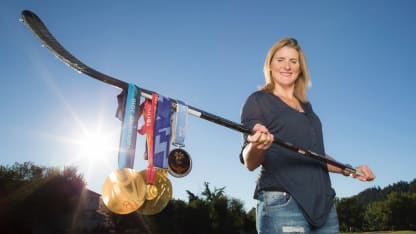
"He'd say, 'You watch that Gretzky, how he delays at the blue line and makes a play,' or, 'You watch that Messier, how he shoots off his off foot,'" she said. "We'd be sort of commenting as the game would go on about the plays being made."
Between periods, she'd put on skates, scoot across an alley to an outdoor rink and imagine she was those legends, mimicking their moves.
She spent hours on that rink. Her parents would have to fish her in for dinner.
Once, after the family had gone to bed, her father came down to the kitchen for a drink of water. He looked out the back window.
Guess where she was doing her dreaming?
"She was by herself, and yet she was out there dipsy-doodling, doing whatever," said her father, Tom. "Yeah, you had to drag her off."
She was 5 or 6 years old.
"I'd try to be quiet, but I'd sneak out at night and still practice with the moonlight kind of illuminating the rink because I just loved to be on the ice," she said. "I'd just make things up. I'd just pretend and be creative.
"And that's kind of how I taught myself how to play hockey."
And that's the essence of her story.
Wickenheiser went on to accomplish so much, winning five Olympic (four gold, one silver) and 13 IIHF World Championship (seven gold, six silver) medals. Twice, in 2002 and 2006, she was the most valuable player of the Olympic women's hockey tournament. At the end of her career, she was the all-time leading Olympic women's scorer with 51 points (18 goals, 33 assists) in 26 games.
She went to rookie camp with the Philadelphia Flyers in 1998 and 1999 and trained with NHL players for years. She became the first woman to play full-time professional hockey at a position other than goalie in 2002-03, when she had 11 points (two goals, nine assists) in 23 games for Salamat, a men's team in Finland's third-division league, and continued pursuing pro hockey in Europe.
Through it all, she had the same purity of purpose. She played for the love of it. As proud as she was to set an example, she didn't compete against or train with men for publicity or to prove a point. She did it to get better.
She constantly pushed herself to be the best.
Now 41, still pushing herself as the assistant director of player development for the Toronto Maple Leafs and a medical student at the University of Calgary, she will be inducted into the Hockey Hall of Fame on Nov. 18. Her name will be in the Great Hall near Gretzky's and Messier's.
"She was closer in the female game to Mark Messier than Wayne Gretzky, but no game has produced another Gretzky, male or female," said Bobby Clarke, a member of the Hockey Hall of Fame and the one who invited her to rookie camp as Flyers general manager. "I think she was as good as it's gotten in female hockey. For me, it was a walk-in to the Hall of Fame for her. She was that good."
* * * * *
Playing with boys growing up, Wickenheiser would cut her hair short. She would go to the rink early, change in a spare room somewhere and run through the lobby.
"I didn't want anyone to know who the girl was, because I just wanted to be accepted for how I played hockey," she said.
When she was about 8, a hockey school in Swift Current, Saskatchewan, wouldn't admit her. Boys only.
"I was taken aback," said her mother, Marilyn. "So I just said, 'Well, I don't understand why. Give me some reasons.' Well, I couldn't get a reason. And I said, 'Well, then I think this is a human rights issue, and I think I'll be taking it a little further,' at which time they decided to accept her."
The rink was abuzz. Everyone wanted to know which player was the girl.
"They were expecting somebody to fall down on the ice and get up and fall down," her father said. "They're watching, and they said, 'You can't tell which one she is.' And I just smiled. I never said nothing."
When Wickenheiser was about 12, the family moved to Calgary. She played Bantam AAA with boys. She played a season with girls, didn't find it competitive enough and tried Midget AAA with the boys. After playing well in a tournament in Medicine Hat, Alberta, she got called into the coach's office and expected praise.
She got cut.
"Throughout my whole upbringing, I always had to face that," she said. "There was a lot of adversity. People didn't want a girl around."
Then Canada came calling. Wickenheiser made the women's national team at age 15, beginning a 23-year career.
It's easy to say the rest is history. But she never took the easy route, as Hockey Hall of Famer Danielle Goyette, her longtime linemate and coach, wrote in a testimonial for NHL.com.
On summer visits to her grandfather's farm in Lumsden, Saskatchewan, Wickenheiser didn't have a gym. So she'd make her own out of whatever she could find, like, say, putting rocks in a wheelbarrow, lying on her back and pushing up on the handles to do a bench press. It was like a "Rocky" movie and foreshadowed many sequels.
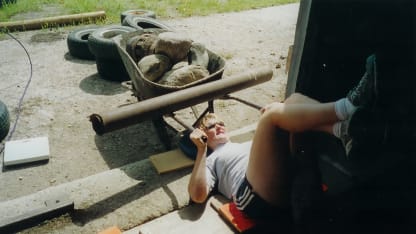
When women's hockey debuted at the 1998 Nagano Olympics, Clarke was GM of Canada's men's team. He got to see the women on the ice and speak to them in the Olympic Village.
"For someone like myself who had spent his life in men's hockey, it was a real eye-opener," Clarke said. "What I found talking to Wick and some of her teammates was that these are hockey players. They just want to play hockey. They want to get better. They want to do the right things for their team, no different than the players we had on the men's team."
Clarke invited Wickenheiser to those Flyers rookie camps because he saw she needed tougher competition to improve. This time she was welcome with the boys, but there was an echo of the past.
"If you just sat in the stands, you didn't know there was a girl on the ice," Clarke said. "She was better than a lot of our 18-year-old kids."
She was 20 and 21 then, a little older.
"I was standing down around the boards when she was at one of our camps, and I heard one of the young players say, '… That's a girl!'" Clarke said with a laugh. "His buddy standing next to him says, 'I know, and she's better than us!'"
* * * * *
Wickenheiser is a role model, of course.
Her legacy project is the Canadian Tire Wickenheiser World Female Hockey Festival, known as WickFest. It features a tournament; includes clinics and workshops on subjects like mindset and nutrition; and celebrates its 10th anniversary this season Nov. 14-17 and Nov. 21-24 in Calgary, and Jan. 30-Feb 2 in Surrey, British Columbia.
"Now what I'm most proud of, a little girl in this country, or really anywhere in North America, can walk to a rink with a bag and a stick and want to play hockey, and nobody's going to think twice," she said.
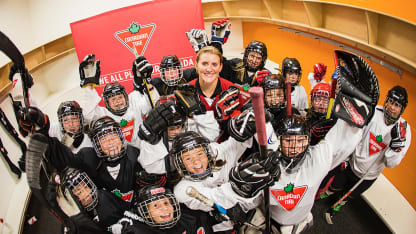
But remember what made Wickenheiser a role model. Remember what made her a Hockey Hall of Famer.
Remember the essence of her story.
"When they talk about women's players a lot, they'll say, 'She's a great role model,' because they didn't watch her play enough and they don't know," she said.
"I came to play and perform, and I cared about being the best player I could, and I really tried to be a master of my craft. It means a lot to me when people talk about how I played the game and kind of player I was. It doesn't happen as much for female athletes."
In the end, Wickenheiser should be remembered as one of the best, if not the best, to play women's hockey, as a power forward who elevated the shot in the women's game, as a great player, period.
She was intensely competitive, sometimes taking penalties, bringing it every night whether there was a small crowd for a game in the middle of nowhere or a packed house for an Olympic final.
"When I was growing up, she was someone I looked up to, the way she played," Canada forward Natalie Spooner said. "I remember seeing a game when I was probably 13, and she was so fast on the ice. It was Four Nations Cup, and I was like, 'Wow.' She was so dominant."
Angela Ruggiero, who faced Wickenheiser as a defenseman for the United States, said, "She was like any other Hall of Famer -- amazing, fast -- and you had to pay attention when she was out there."
Read that again: She was like any other Hall of Famer.
Which means she has gotten what she always wanted and more. She has been accepted for how she played hockey, at the highest level.
"I just remember whenever I was on the ice with her, just get her stick," United States forward Kendall Coyne Schofield said. "Just don't let her have the puck. Just get in the way, do whatever you can to not let her get to the house.
"But I remember thinking it was so cool that I got to play against her. It was early in my career; she was late in hers. She's a legend, and arguably the greatest to ever play the game, another pioneer that this game has been blessed to see."
NHL.com staff writer Tracey Myers contributed to this report




